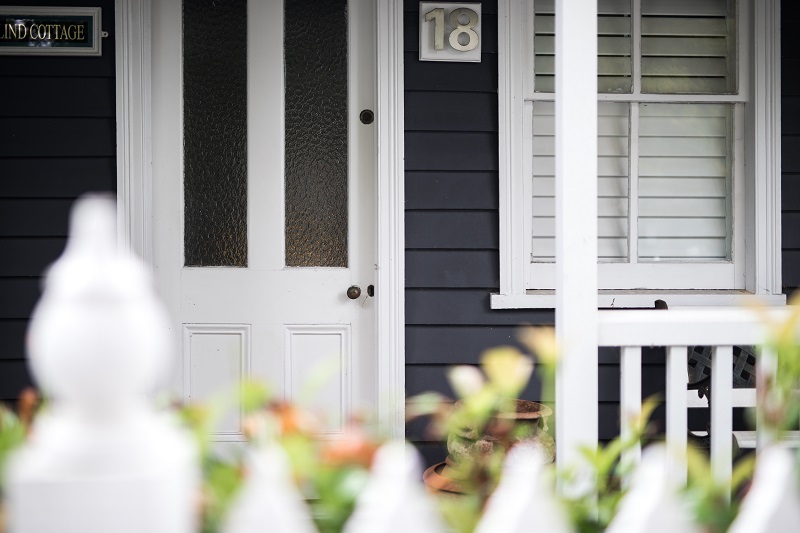At More Vision Painting, we understand the importance of keeping your home’s exterior in pristine condition. Exterior paint is not just about aesthetic appeal; it also protects your home from the elements. Knowing the lifespan of exterior paint and recognizing when it’s time to repaint can save you from costly repairs and ensure your home looks its best. This guide will help you understand the factors that influence paint longevity and the signs that indicate it’s time for a new coat.
The Lifespan of Exterior Paint
The lifespan of exterior paint varies depending on several factors, including the type of paint used, the quality of the application, the surface being painted, and environmental conditions. On average, exterior paint lasts between 5 to 10 years. Here’s a closer look at the factors that affect this lifespan:
1. Type of Paint:
Acrylic Paint: Known for its durability and flexibility, acrylic paint can last up to 10 years.
Latex Paint: Commonly used for exterior surfaces, latex paint typically lasts around 5-7 years.
Oil-Based Paint: Though less flexible and more prone to cracking, oil-based paint can last up to 10 years if properly maintained.
2. Quality of Application:
A professional application ensures proper surface preparation, primer application, and even paint coverage, significantly extending the lifespan of the paint.
3. Surface Type:
Wood surfaces may require more frequent repainting (every 3-7 years) compared to stucco or brick, which can last longer (up to 10 years).
4. Environmental Factors:
Homes in areas with harsh weather conditions, such as intense sunlight, heavy rainfall, or extreme temperatures, may experience quicker paint degradation.
When to Repaint Your Home
Repainting your home’s exterior is not just about refreshing its appearance; it’s also crucial for maintaining its structural integrity. Here are the key signs that indicate it’s time to repaint your home:
1. Fading Color:
Over time, exposure to sunlight causes paint to fade. If you notice your home’s color looking dull or washed out, it’s a sign that the paint is losing its protective qualities.
2. Cracking and Peeling:
Cracks and peeling paint are clear indicators that the paint is no longer adhering properly to the surface. This can expose the underlying material to moisture, leading to potential damage.
3. Blistering:
Blisters or bubbles on the paint surface often result from moisture trapped beneath the paint. This can occur due to poor surface preparation or environmental factors.
4. Chalking:
Chalking is a powdery residue that forms on the paint’s surface over time. While it can be cleaned, it’s a sign that the paint is breaking down and losing its effectiveness.
5. Mildew and Mold:
The presence of mildew or mold indicates that moisture is penetrating the paint. This not only affects the appearance but can also lead to more significant issues if left untreated.
6. Caulk Deterioration:
If the caulking around windows and doors is cracking or pulling away, it’s a sign that the exterior needs attention. Repainting often involves re-caulking to ensure a proper seal.
Why Repainting is Important
Repainting your home’s exterior offers several benefits beyond improving its curb appeal. Here’s why regular repainting is essential:
1. Protection Against the Elements:
Exterior paint acts as a barrier against harsh weather conditions, protecting your home from moisture, UV rays, and temperature fluctuations. Regular repainting ensures this barrier remains intact.
2. Prevention of Structural Damage:
By sealing cracks and preventing moisture infiltration, a fresh coat of paint helps avoid issues like wood rot, mold growth, and structural damage.
3. Increased Property Value:
A well-maintained exterior enhances your home’s curb appeal and can significantly increase its market value. Potential buyers are more likely to be attracted to a home that looks well-cared for.
4. Cost Savings:
Addressing paint issues early can prevent more extensive and costly repairs down the line. Regular maintenance and repainting are more cost-effective than dealing with significant structural damage.
5. Improved Energy Efficiency:
Light-colored paints can reflect sunlight, reducing heat absorption and potentially lowering cooling costs during the summer months.
Tips for a Successful Repainting Project
To ensure the best results for your exterior repainting project, consider the following tips:
1. Choose Quality Paint:
Investing in high-quality paint may have a higher upfront cost, but it pays off in the long run with better durability and a longer lifespan.
2. Hire Professionals:
A professional painting company like More Vision Painting ensures proper preparation, application, and clean-up, resulting in a superior finish and longer-lasting results.
3. Prepare the Surface:
Proper surface preparation, including cleaning, sanding, and priming, is crucial for paint adhesion and longevity.
4. Consider the Weather:
Plan your painting project during a time of year with mild and dry weather conditions to ensure optimal drying and curing.
5. Regular Maintenance:
Keep an eye on your home’s exterior and address minor issues promptly. Regular cleaning and touch-ups can extend the life of your paint job.
Conclusion
Repainting your home’s exterior is a vital aspect of home maintenance that goes beyond aesthetic appeal. By understanding the lifespan of exterior paint and recognizing the signs that it’s time to repaint, you can protect your home from the elements, prevent structural damage, and maintain its value. At More Vision Painting, we are committed to providing high-quality painting services in Lehigh Valley, PA, ensuring your home looks beautiful and remains protected for years to come. Contact us today to schedule a consultation and give your home the care it deserves.




